Distribution Characteristics of Ground Echo Amplitude and Recognition of Signal Grazing Angle
Abstract
:1. Introduction
2. Area Target Scattering Model and Bispectrum
2.1. Area Target Scattering Model
2.1.1. Rayleigh Distribution
2.1.2. Lognormal Distribution
2.1.3. Weibull Distribution
2.1.4. K Distribution
2.1.5. Gamma Distribution
2.2. Bispectrum Characteristic
3. Selected AIB and Network Optimization
3.1. Selected AIB
3.2. Data Preprocessing
3.3. Optimization of Deep Belief Network
4. Feature Extraction and Network Optimization
4.1. Measurement and Test Radar
4.2. Alpine Meadow Amplitude PDF
5. DBN Classification
6. Conclusions
Author Contributions
Funding
Institutional Review Board Statement
Informed Consent Statement
Data Availability Statement
Conflicts of Interest
References
- Yu, H.; Liu, N.; Zhang, L.; Li, Q.; Zhang, J.; Tang, S.; Zhao, S. An Interference Suppression Method for Multistatic Radar Based on Noise Subspace Projection. IEEE Sens. J. 2020, 20, 8797–8805. [Google Scholar] [CrossRef]
- Asada, M.; Suzuki, S. Terahertz Emitter Using Resonant-Tunneling Diode and Applications. Sensors 2021, 21, 1384. [Google Scholar] [CrossRef]
- Sabery, S.M.; Bystrov, A.; Navarro-Cía, M. Study of Low Terahertz Radar Signal Backscattering for Area Identification. Sensors 2021, 21, 2954. [Google Scholar] [CrossRef]
- Kaplan, S.; McFall, R. The Statistical Properties of Noise Applied to Radar Range Performance. Proc. IRE 1951, 39, 56–60. [Google Scholar] [CrossRef]
- Oliver, C.; Quegan, S. Understanding Synthetic Aperture Radar Images; SciTech Publishing: Norwood, MA, USA, 1998; pp. 128–130. [Google Scholar]
- Krylov, V.; Zerubi, J. Generalized gamma mixtures for supervised SAR image classification. Proc. Graph. Con Russ. 2010, 6, 107–110. [Google Scholar]
- Moser, G.; Zerubia, J.; Serpico, S.B. SAR amplitude probability density function estimation based on a generalized Gaussian model. IEEE Trans. Image Process. 2006, 15, 1429–1442. [Google Scholar] [CrossRef] [Green Version]
- Szajnowski, W. Estimator of log-normal distribution parameters. IEEE Trans. Aerosp. Electron. Systems 1977, 13, 533–536. [Google Scholar] [CrossRef]
- Oliver, C.J. Optimum texture estimators for SAR clutter. J. Phys. D Appl. Phys. 1993, 26, 1824–1835. [Google Scholar] [CrossRef]
- Stacy, E.W. A Generalization of the Gamma Distribution. Ann. Math. Stat. 1962, 33, 1187–1192. [Google Scholar] [CrossRef]
- Li, H.-C.; Hong, W.; Wu, Y.-R.; Fan, P.-Z. On the Empirical-Statistical Modeling of SAR Images with Generalized Gamma Distribution. IEEE J. Sel. Top. Signal. Process. 2011, 5, 386–397. [Google Scholar] [CrossRef]
- Nicolas, J. Introduction to second kind statistics: Application of logmoments and log-cumulants to second kind statistics: Ap-plication of logmoments and log-cumulants to analysis of radar images. Traitement Du Signal. 2002, 19, 139–167. [Google Scholar]
- Wang, Y.; Wang, W.; Zhou, M.; Ren, A.; Tian, Z. Remote Monitoring of Human Vital Signs Based on 77-GHz mm-Wave FMCW Radar. Sensors 2020, 20, 2999. [Google Scholar] [CrossRef]
- Feng, J.; Cao, Z.; Pi, Y. Multiphase SAR Image Segmentation with Statistical-Model-Based Active Contours. IEEE Trans. Geosci. Remote Sens. 2013, 51, 4190–4199. [Google Scholar] [CrossRef]
- Chandran, V.; Elgar, S.L. Pattern recognition using invariants defined from higher order spectra—One-dimensional inputs. IEEE Trans. Signal. Process. 1993, 41, 205–212. [Google Scholar] [CrossRef]
- Tugnait, J. Detection of non-Gaussian signals using integrated polyspectrum. IEEE Trans. Signal. Process. 1994, 42, 3137–3149. [Google Scholar] [CrossRef]
- Liao, X.; Bao, Z. Circularly integrated bispectra: Novel shift invariant features for high-resolution radar target recognition. Electron. Lett. 1998, 34, 1879–1880. [Google Scholar] [CrossRef]
- Junguo, M. Research on Feature Extraction and Recognition Method of Space Radar Target. Ph.D. Thesis, Beijing, China, 2006. [Google Scholar]
- Heo, J.; Jung, M.; Lee, M. FPGA Implementation of an Efficient FFT Processor for FMCW Radar Signal Processing. Sensors 2021, 21, 6443. [Google Scholar] [CrossRef]
- Yan, J.; Liu, H.; Jiu, B.; Bao, Z. Power Allocation Algorithm for Target Tracking in Unmodulated Continuous Wave Radar Network. IEEE Sens. J. 2014, 15, 1098–1108. [Google Scholar] [CrossRef]
- Ulaby, F.T.; Deventer, T.V.; East, J.R. Millimeter-wave bistatic scattering from ground and vegetation targets. IEEE Trans. Geosci. Remote Sens. 2002, 26, 229–243. [Google Scholar] [CrossRef]
- Fung, A.K.; Li, Z.; Chen, K.S. Backscattering from a randomly rough dielectric surface. IEEE Trans. Geosci. Remote Sens. Lett. 1992, 30, 356–369. [Google Scholar] [CrossRef]
- Rappaport, T.S.; Deng, S. 73 GHz wideband millimeter-wave foliage and ground reflection measurements and models. In Proceedings of the 2015 IEEE International Conference on Communications (ICC), ICC Workshops, London, UK, 8–12 June 2015. [Google Scholar]
- Kim, S.B.; Moghaddam, M.; Tsang, L. Models of L-Band Radar Backscattering Coefficients Over Global Terrain for Soil Moisture Retrieval. IEEE Trans. Geosci. Remote Sens. 2013, 52, 1381–1396. [Google Scholar] [CrossRef]
- Chunliang, X.; Yan, C.; Ling, T.; Mingquan, J.; Zhengchan, L.; Haiping, L. Measuring the Microwave Backscattering Coefficient of Paddy Rice Using FM-CW Ground-Based Scatterometer. In Proceedings of the 2008 International Workshop on Education Technology and Training & 2008 International Workshop on Geoscience and Remote Sensing, Shanghai, China, 21–22 December 2008; pp. 194–198. [Google Scholar]
- Shi, J.; Yin, D. Computational high frequency waves through curved interfaces via the Liouville equation and geometric theory of diffraction. J. Comput. Physics. 2008, 227, 6106–6139. [Google Scholar]
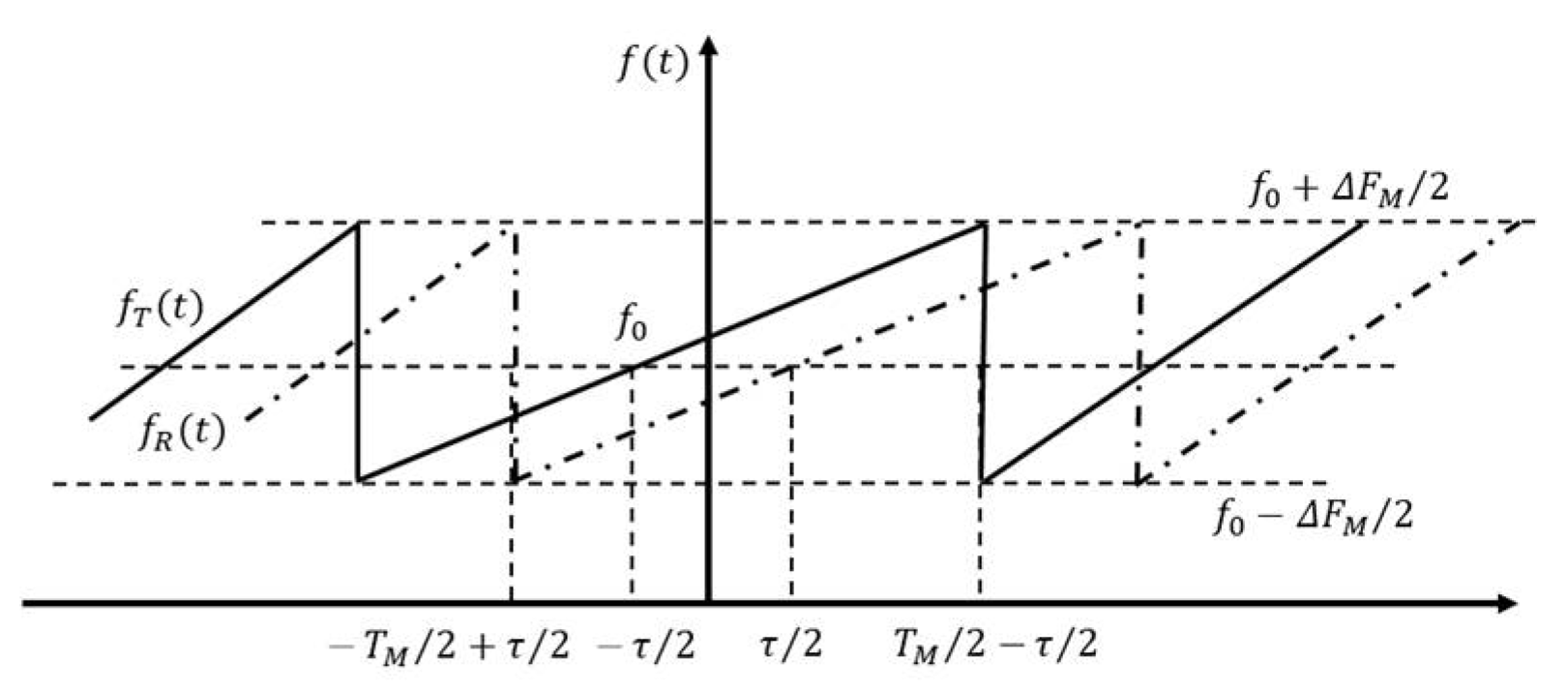
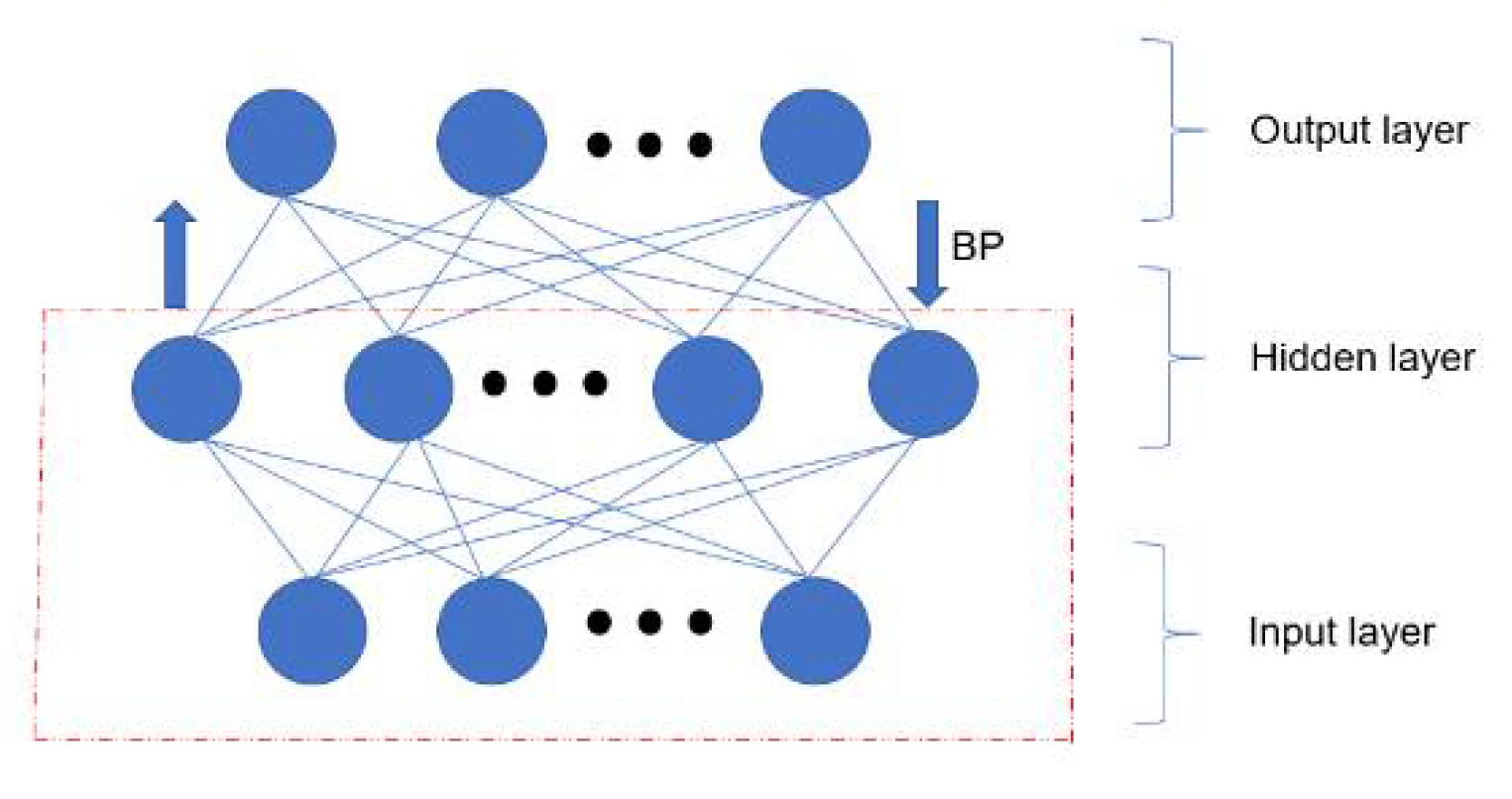



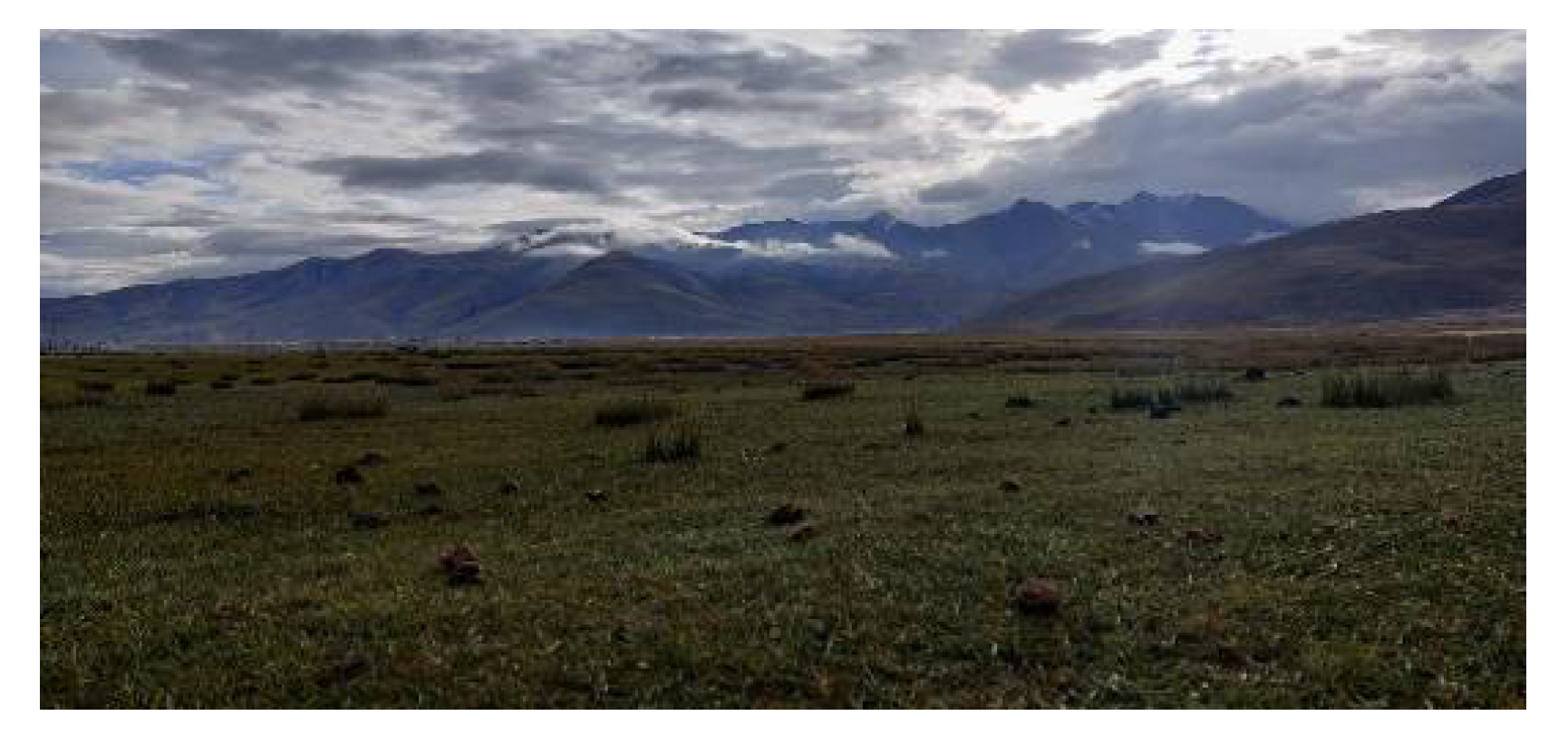
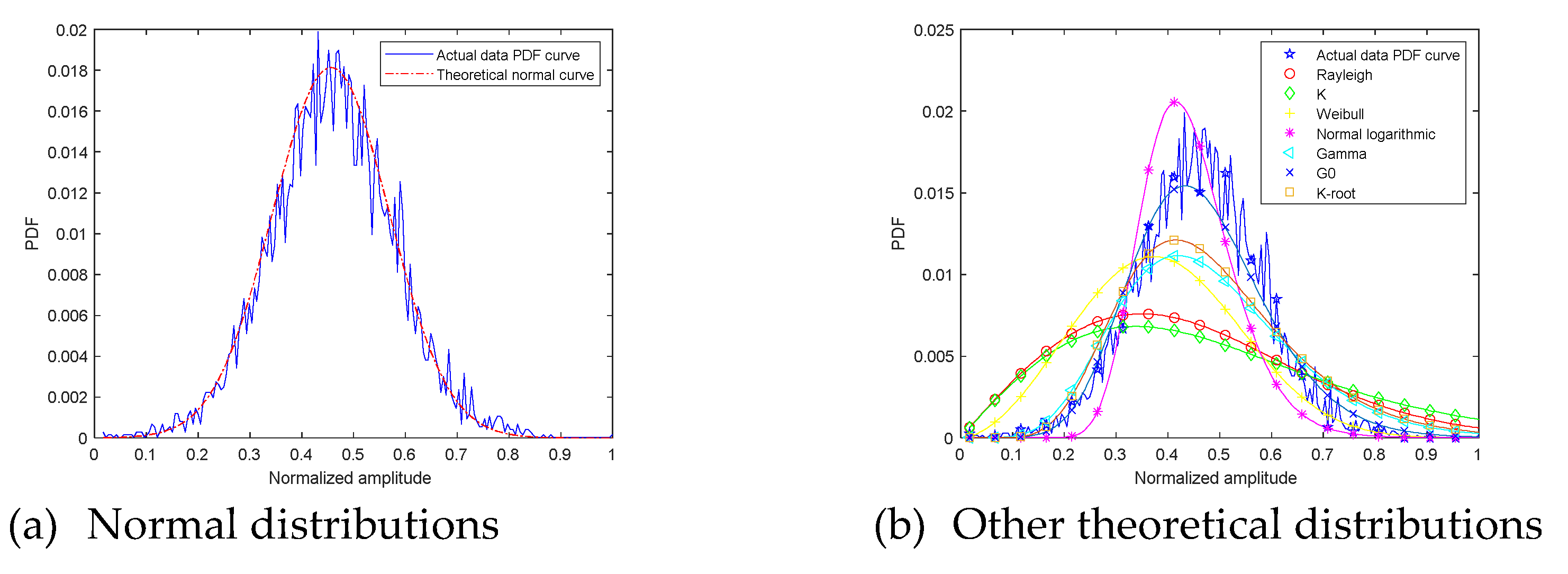
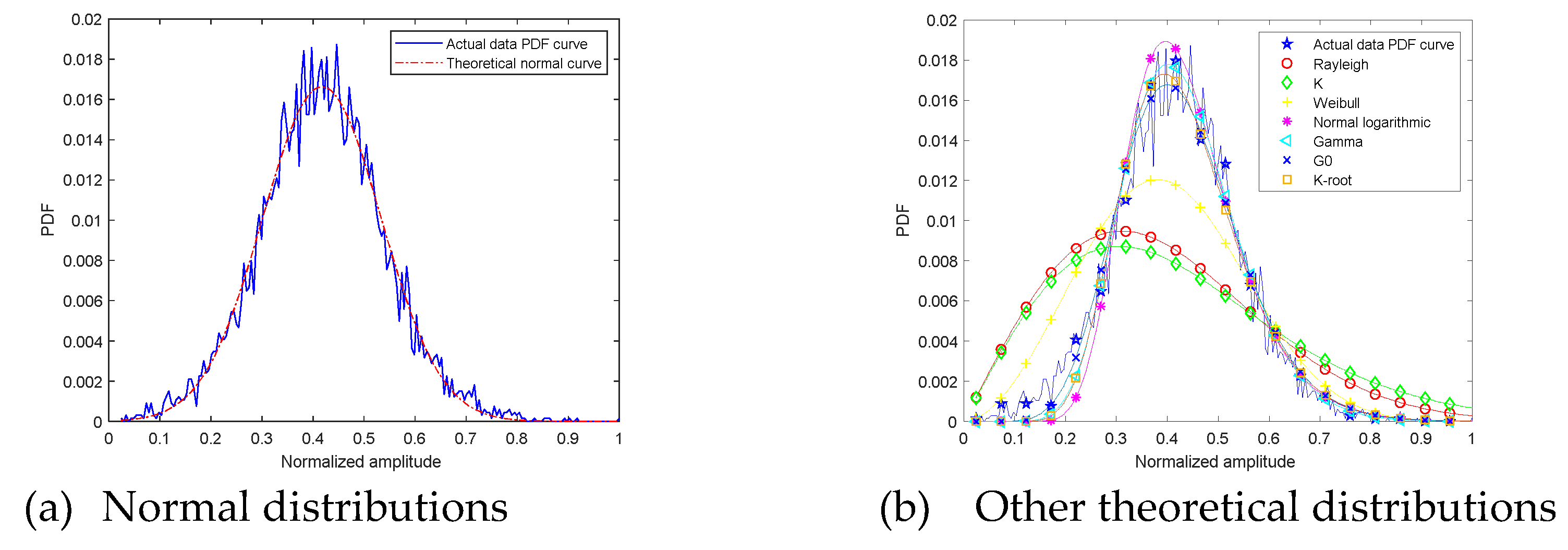

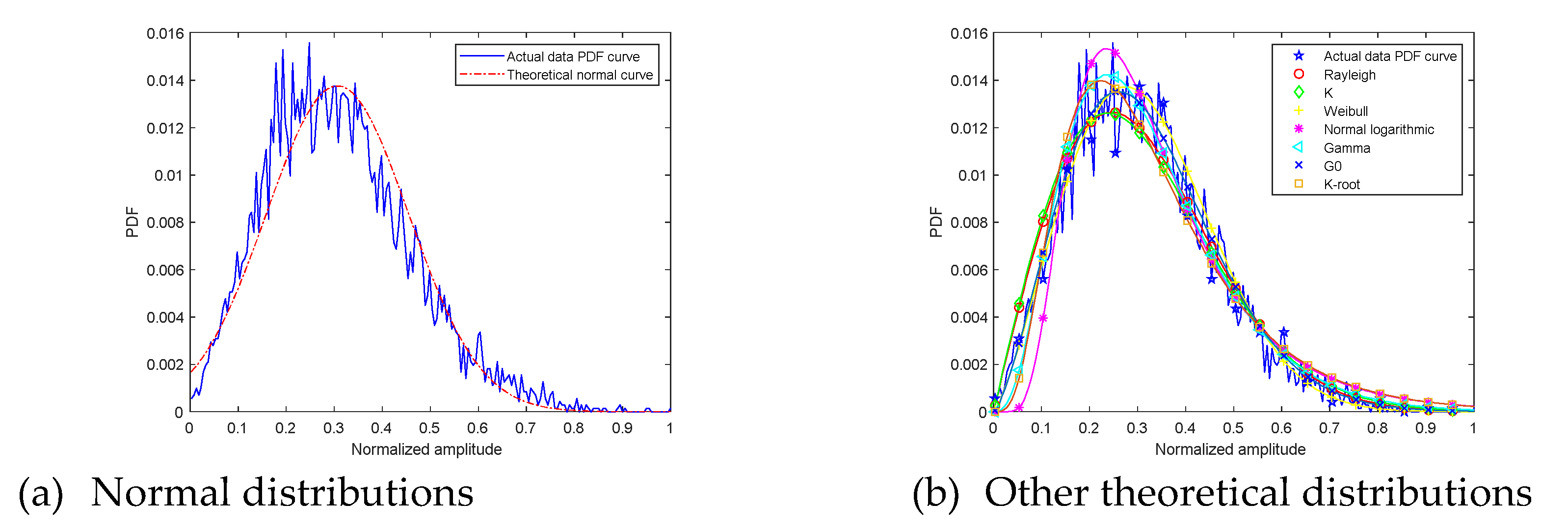
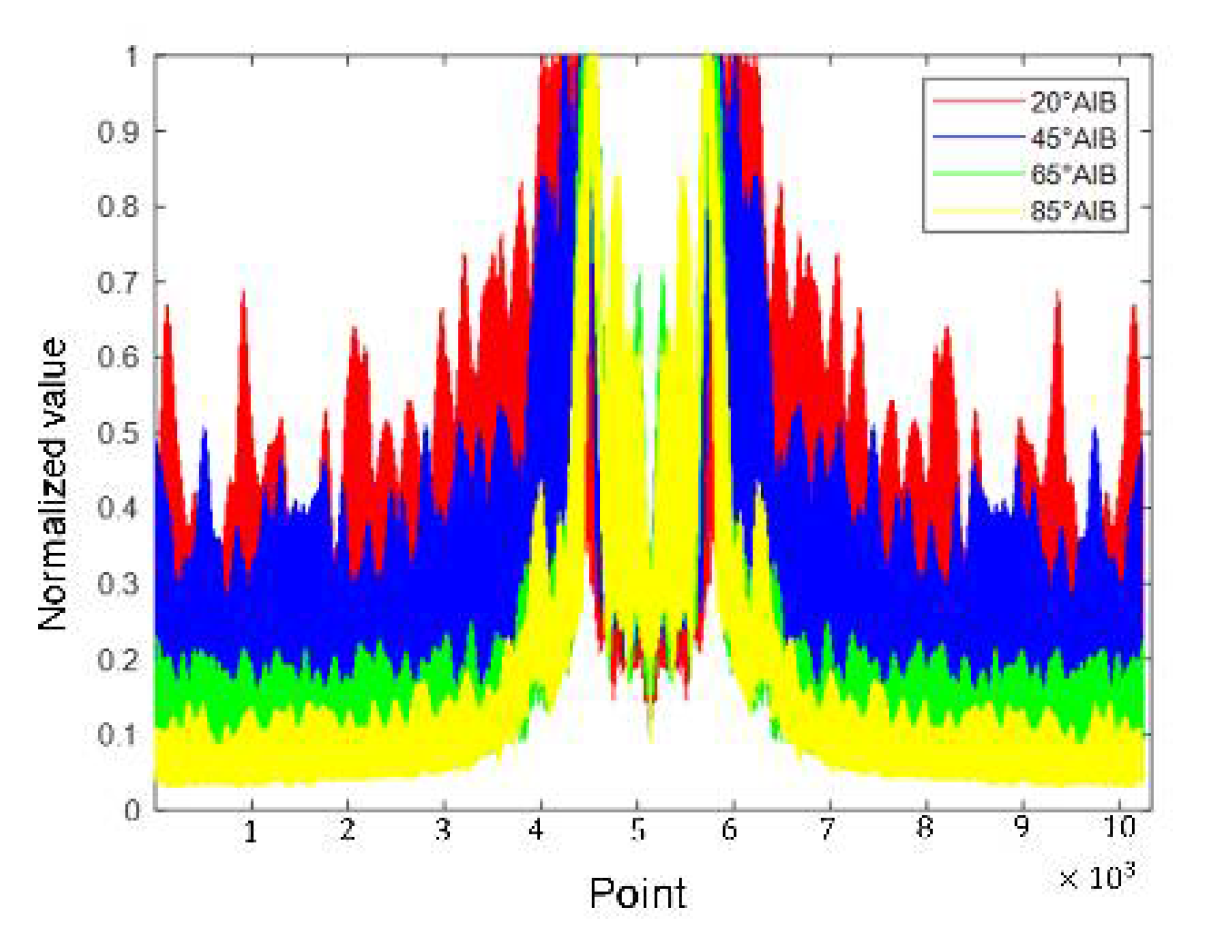

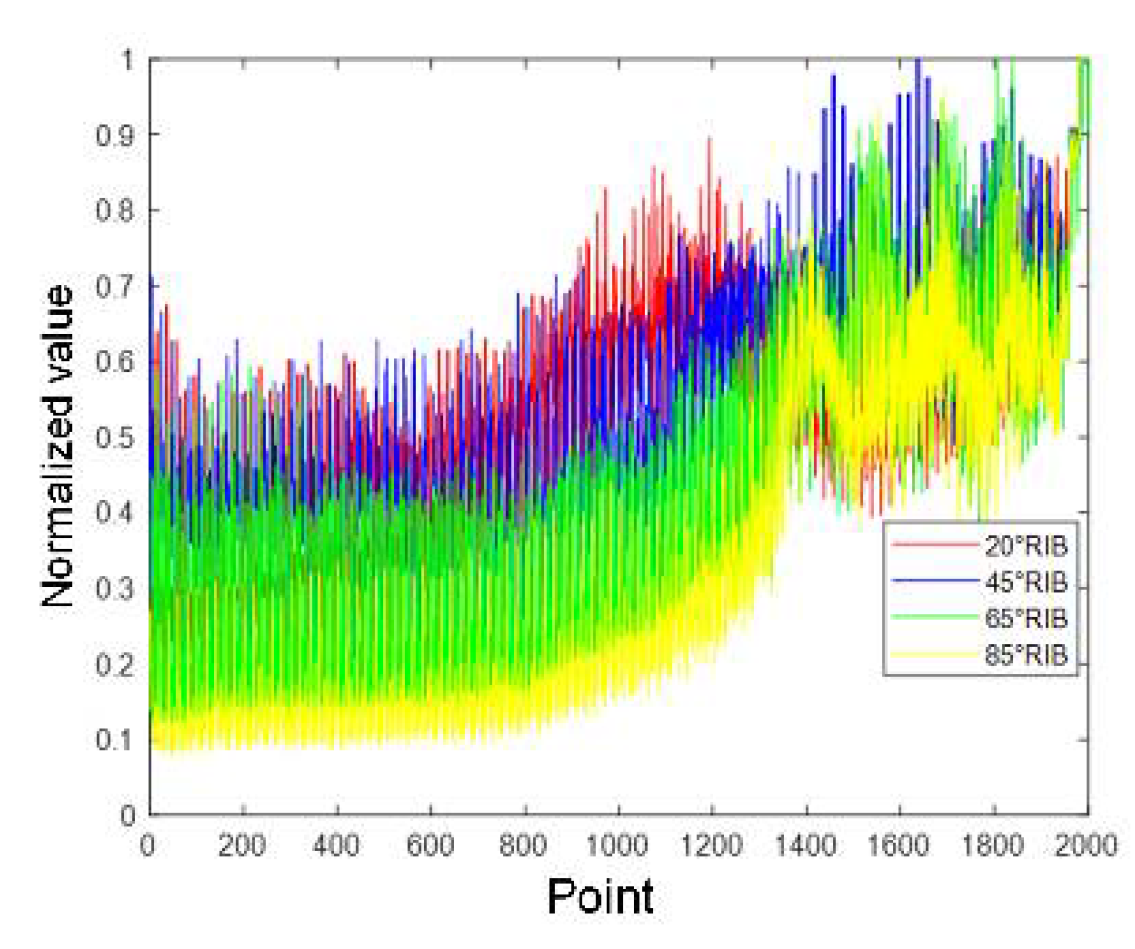
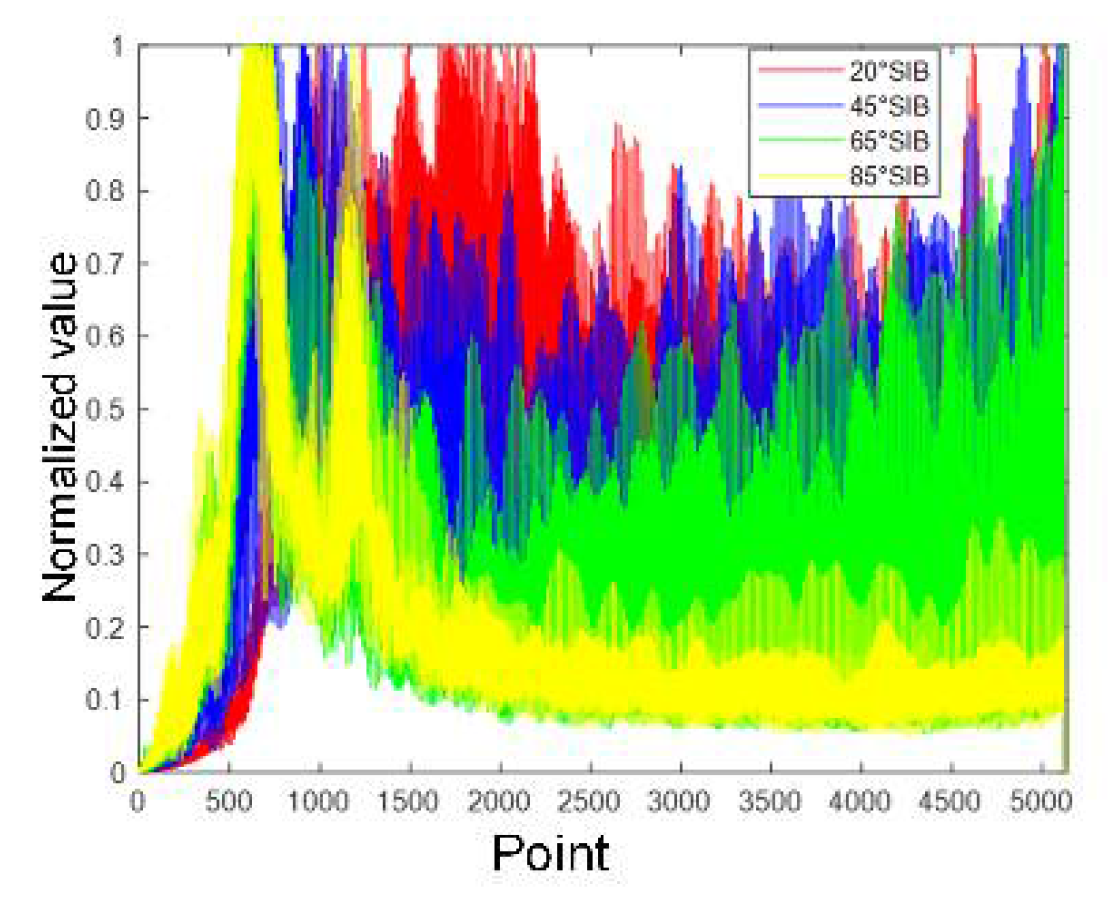
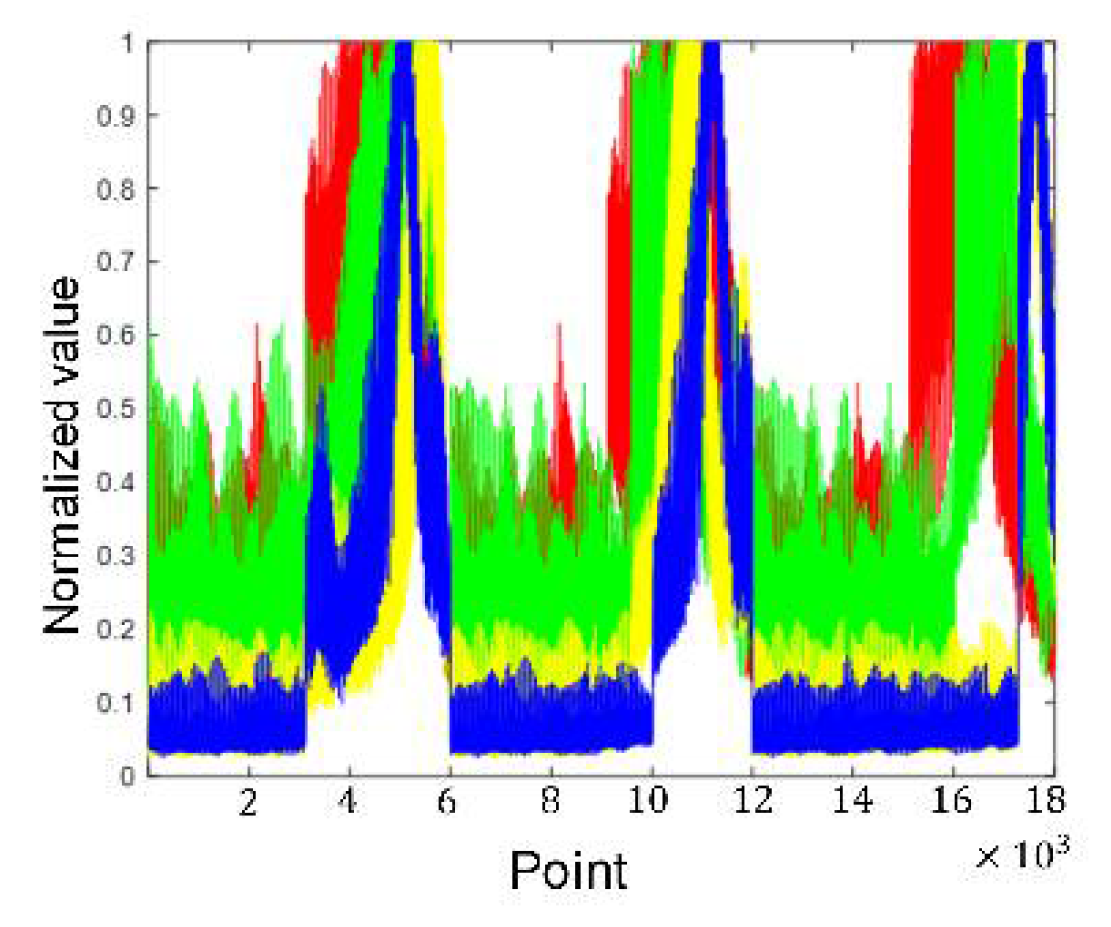
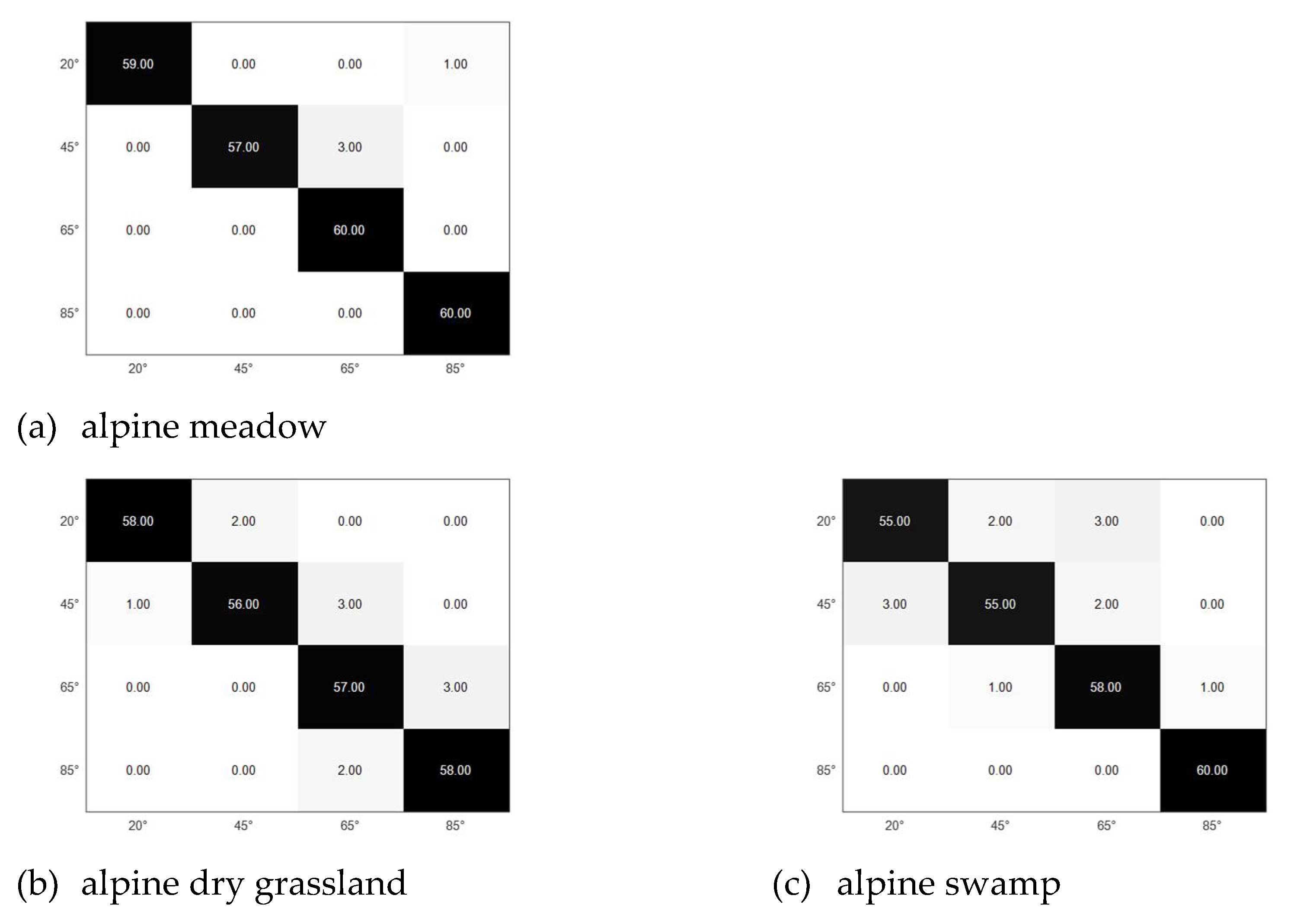
| Distribution | Fitting Error | |
|---|---|---|
| Rayleigh | 0.69 | 0.41 |
| K | 0.74 | 0.34 |
| Weibull | 0.52 | 0.61 |
| lognormal | 0.35 | 0.82 |
| Gamma | 0.36 | 0.80 |
| G0 | 0.18 | 0.95 |
| K-root | 0.33 | 0.83 |
| normal | 0.13 | 0.97 |
| Distribution | Fitting Error | |
|---|---|---|
| Rayleigh | 0.61 | 0.54 |
| K | 0.66 | 0.49 |
| Weibull | 0.33 | 0.83 |
| Lognormal | 0.18 | 0.95 |
| Gamma | 0.14 | 0.97 |
| G0 | 0.13 | 0.97 |
| K-root | 0.15 | 0.97 |
| normal | 0.10 | 0.98 |
| Distribution | Fitting Error | |
|---|---|---|
| Rayleigh | 0.25 | 0.88 |
| K | 0.30 | 0.84 |
| Weibull | 0.14 | 0.96 |
| Lognormal | 0.22 | 0.91 |
| Gamma | 0.17 | 0.94 |
| G0 | 0.14 | 0.96 |
| K-root | 0.18 | 0.93 |
| normal | 0.15 | 0.94 |
| Distribution | Fitting Error | |
|---|---|---|
| Rayleigh | 0.15 | 0.95 |
| K | 0.16 | 0.95 |
| Weibull | 0.12 | 0.96 |
| Lognormal | 0.20 | 0.91 |
| Gamma | 0.15 | 0.95 |
| G0 | 0.12 | 0.97 |
| K-root | 0.17 | 0.93 |
| normal | 0.14 | 0.94 |
| Distribution | ||||
|---|---|---|---|---|
| AIB | 78.33% | 98.33% | 51.67% | 85.00% |
| CIB | 76.67% | 70.00% | 66.67% | 75.00% |
| RIB | 73.33% | 41.67% | 65.00% | 35.00% |
| SIB | 85.00% | 83.00% | 88.33% | 35.00% |
| Alpine meadow | 98.33% | 95.00% | 100% | 100% |
| Alpine dry grassland | 96.67% | 93.33% | 95% | 96.67% |
| Alpine swamp | 91.67% | 91.67% | 96.67% | 100% |
Publisher’s Note: MDPI stays neutral with regard to jurisdictional claims in published maps and institutional affiliations. |
© 2021 by the authors. Licensee MDPI, Basel, Switzerland. This article is an open access article distributed under the terms and conditions of the Creative Commons Attribution (CC BY) license (https://creativecommons.org/licenses/by/4.0/).
Share and Cite
Zhang, G.; Li, P.; Li, G.; Jia, R. Distribution Characteristics of Ground Echo Amplitude and Recognition of Signal Grazing Angle. Sensors 2021, 21, 8315. https://doi.org/10.3390/s21248315
Zhang G, Li P, Li G, Jia R. Distribution Characteristics of Ground Echo Amplitude and Recognition of Signal Grazing Angle. Sensors. 2021; 21(24):8315. https://doi.org/10.3390/s21248315
Chicago/Turabian StyleZhang, Guangwei, Ping Li, Guolin Li, and Ruili Jia. 2021. "Distribution Characteristics of Ground Echo Amplitude and Recognition of Signal Grazing Angle" Sensors 21, no. 24: 8315. https://doi.org/10.3390/s21248315
APA StyleZhang, G., Li, P., Li, G., & Jia, R. (2021). Distribution Characteristics of Ground Echo Amplitude and Recognition of Signal Grazing Angle. Sensors, 21(24), 8315. https://doi.org/10.3390/s21248315





